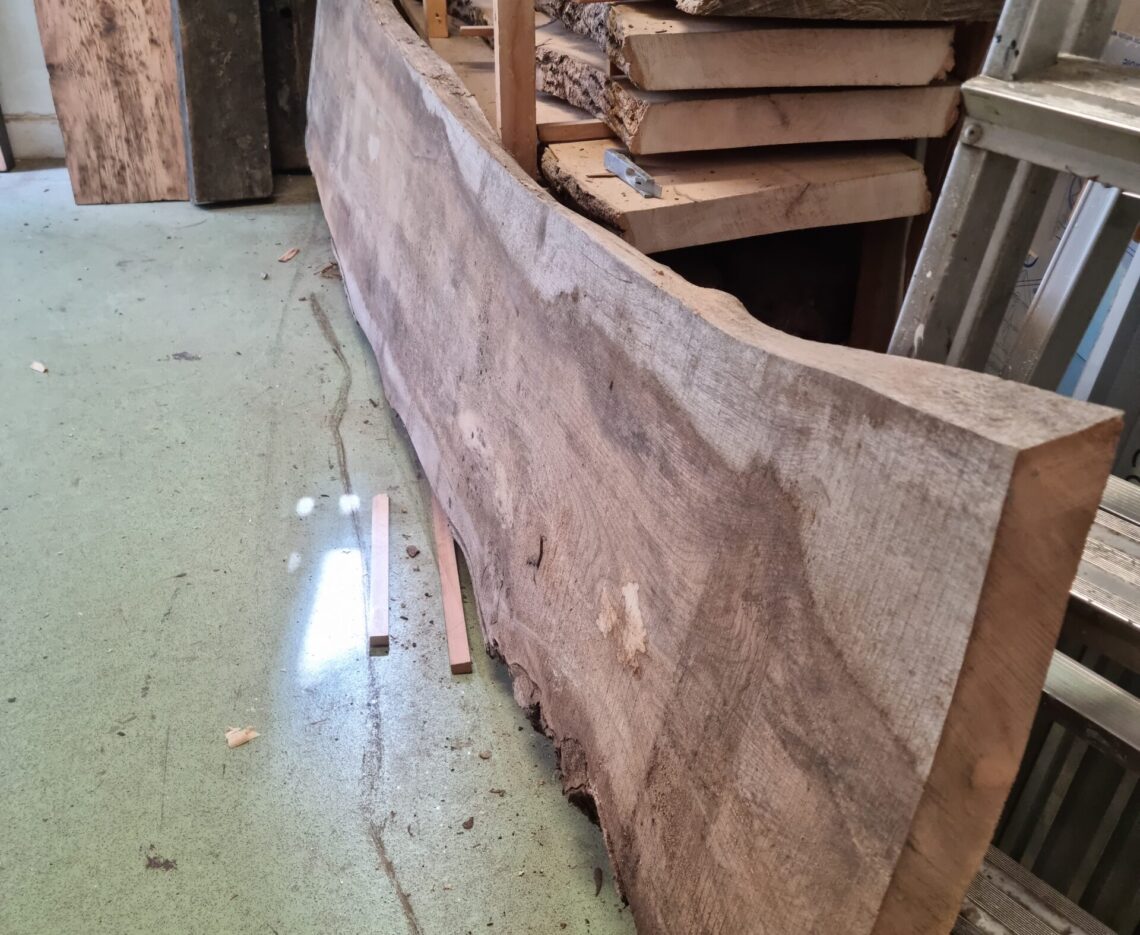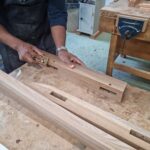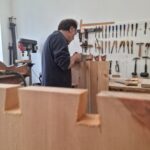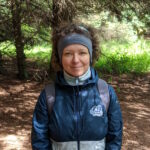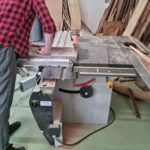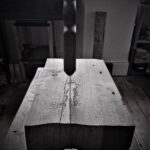I teased at the end of my last post that I would be introducing a new character to the story, some elm wood from which the base to our installation will be constructed. I described in earlier posts how the pine came into our possession, and its links to the history and spirit of the building. This is no less the case with the elm we are using, although it is not nearly so old.
The wood comes from an elm tree which had to be removed during the preparation work for the building project which is transforming a disused hospital into the Edinburgh Futures Institute. At the time this building work began, to our great good fortune, Lesley McAra, the EFI’s first Director, had the foresight to arrange with the Grassmarket Community Project to mill, store and season the wood from this elm tree, so that it could be used in future projects. At that point, before I joined the University of Edinburgh, our project did not exist, but we are very happily benefitting from this decision. Being able to join together wood from the first phase of the building’s life 150 years ago with wood connected to the current phase is for me a great privilege, and has become an important aspect of the spirit of the artwork on which we are working.
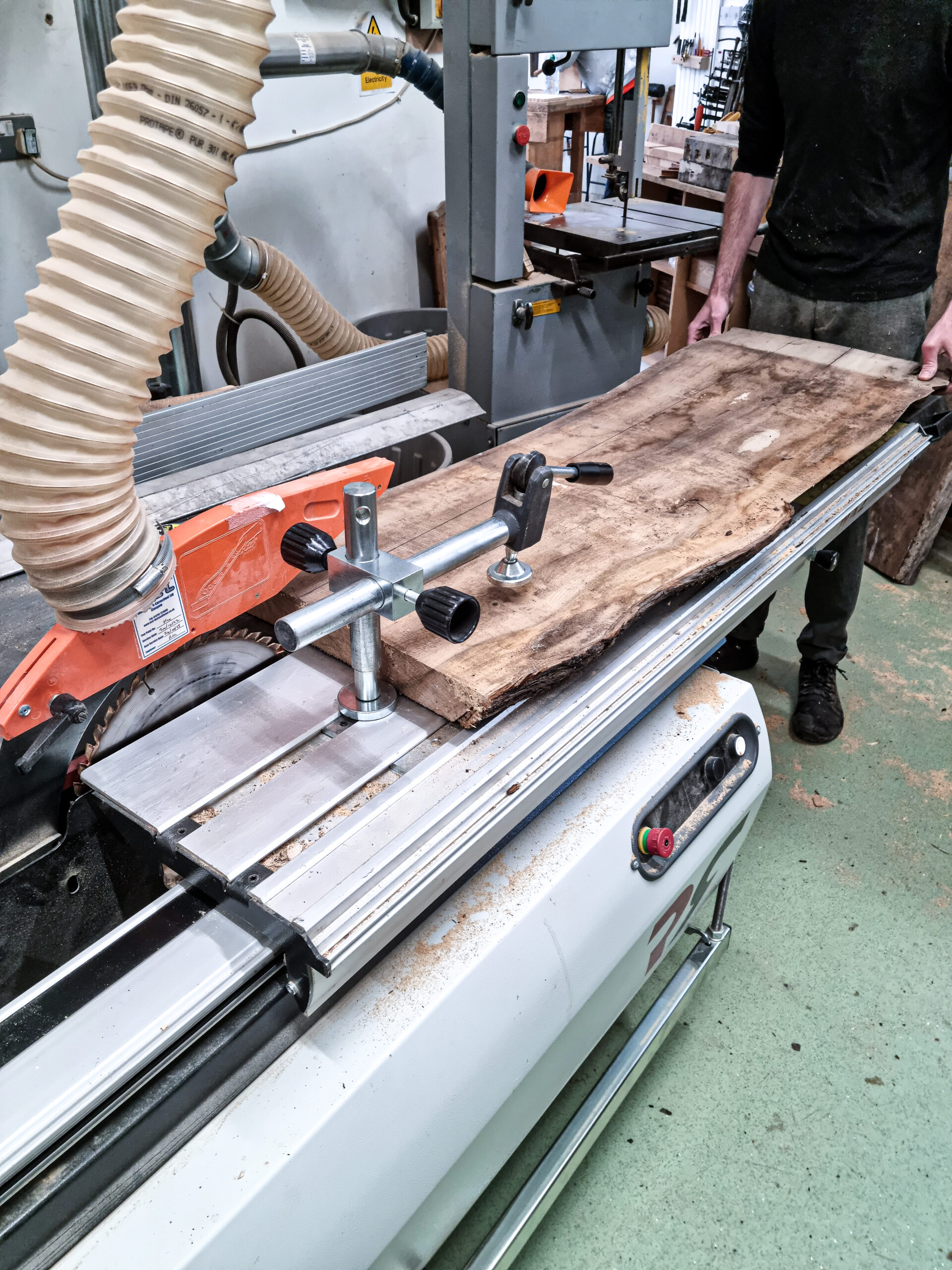
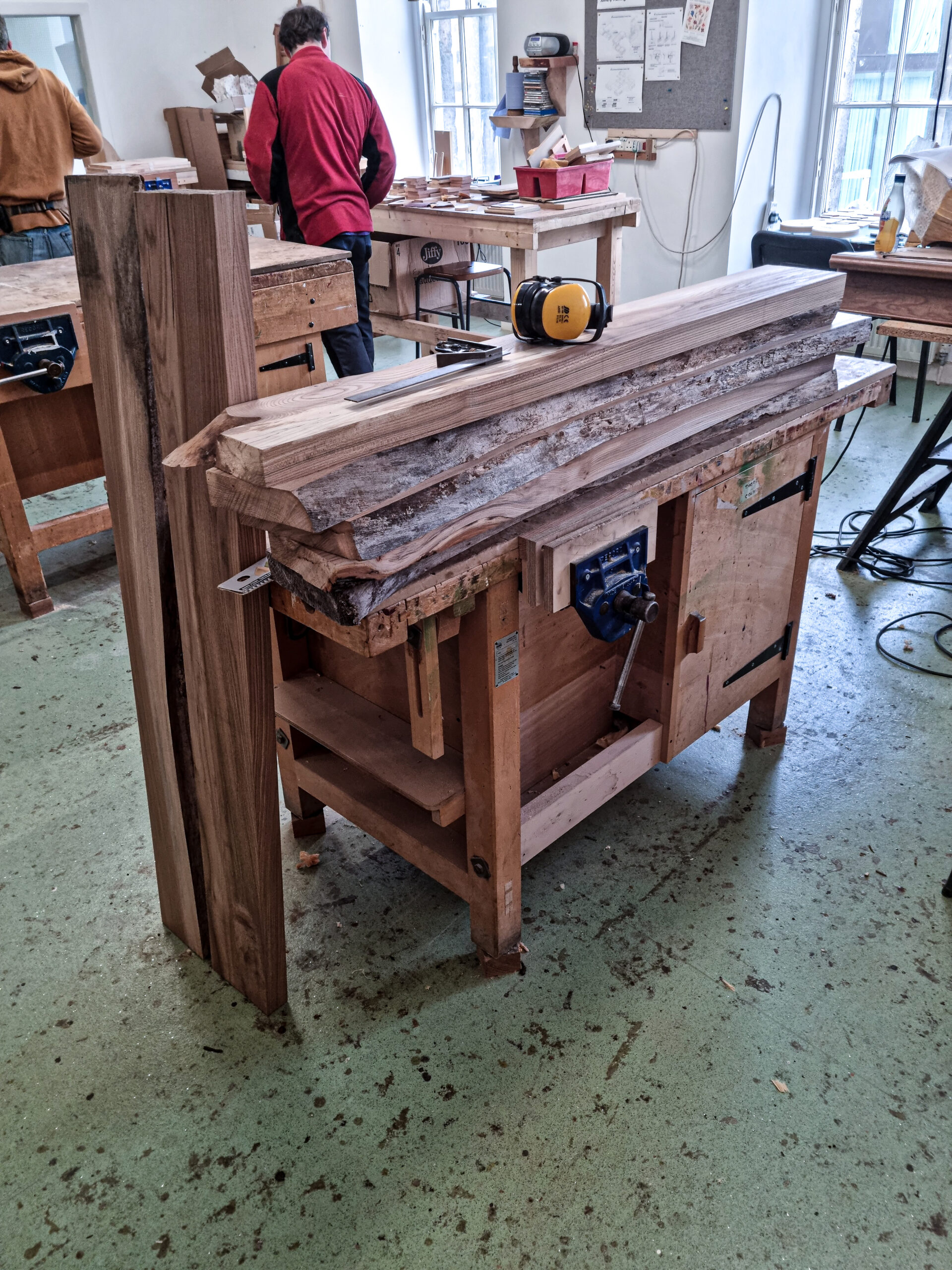
Jon first milled and broke down the slabs of elm into the rough dimensions we needed, and we were then able to begin what was really the first widely collaborative stage in the process. Firstly experienced woodworker Campbell helped me to design and make a template from MDF of the curve that I wanted to add to the elm stretchers. He helped me to shape it with a bandsaw and a powered router, both tools which were new and intimidating for me, and I could then use this template to mark the curve onto the elm boards:
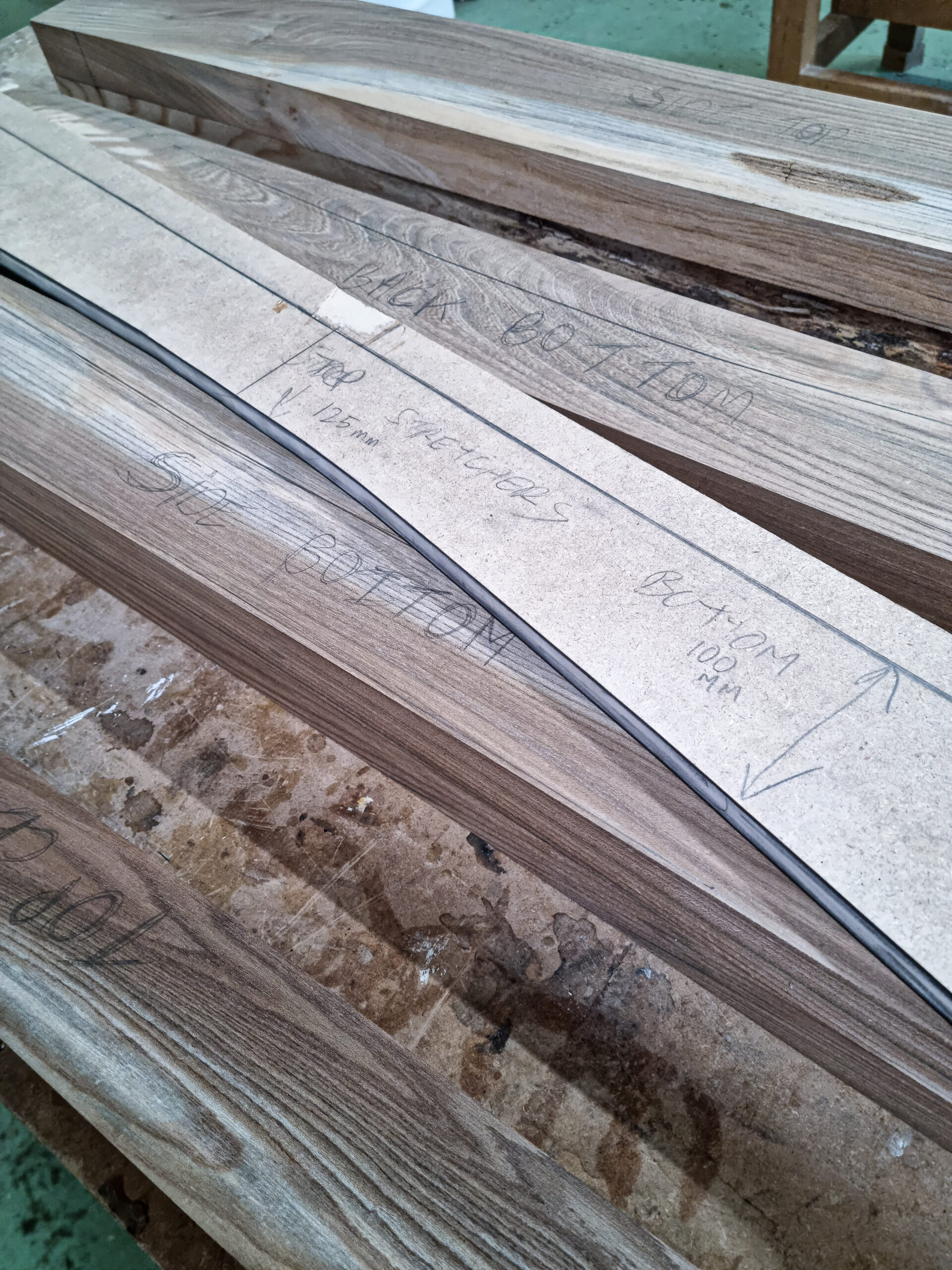
I then used my newfound ability with the bandsaw to cut the curve into the elm, cutting as close as I dared to the lines and leaving only a few milimetres to be removed with handtools.
This marked the entrance of the GCP’s Workshop Assistant Steven and regular volunteer instructor Mustapha into the process, as the three of us used a variety of tools including spokeshaves, rasps, chisels and sandpaper to refine the curves. In yet another first for me I also got my first opportunity to use a tool called a compass plane, a handplane whose sole can be bent either in or out in order to plane either concave or convex curves:
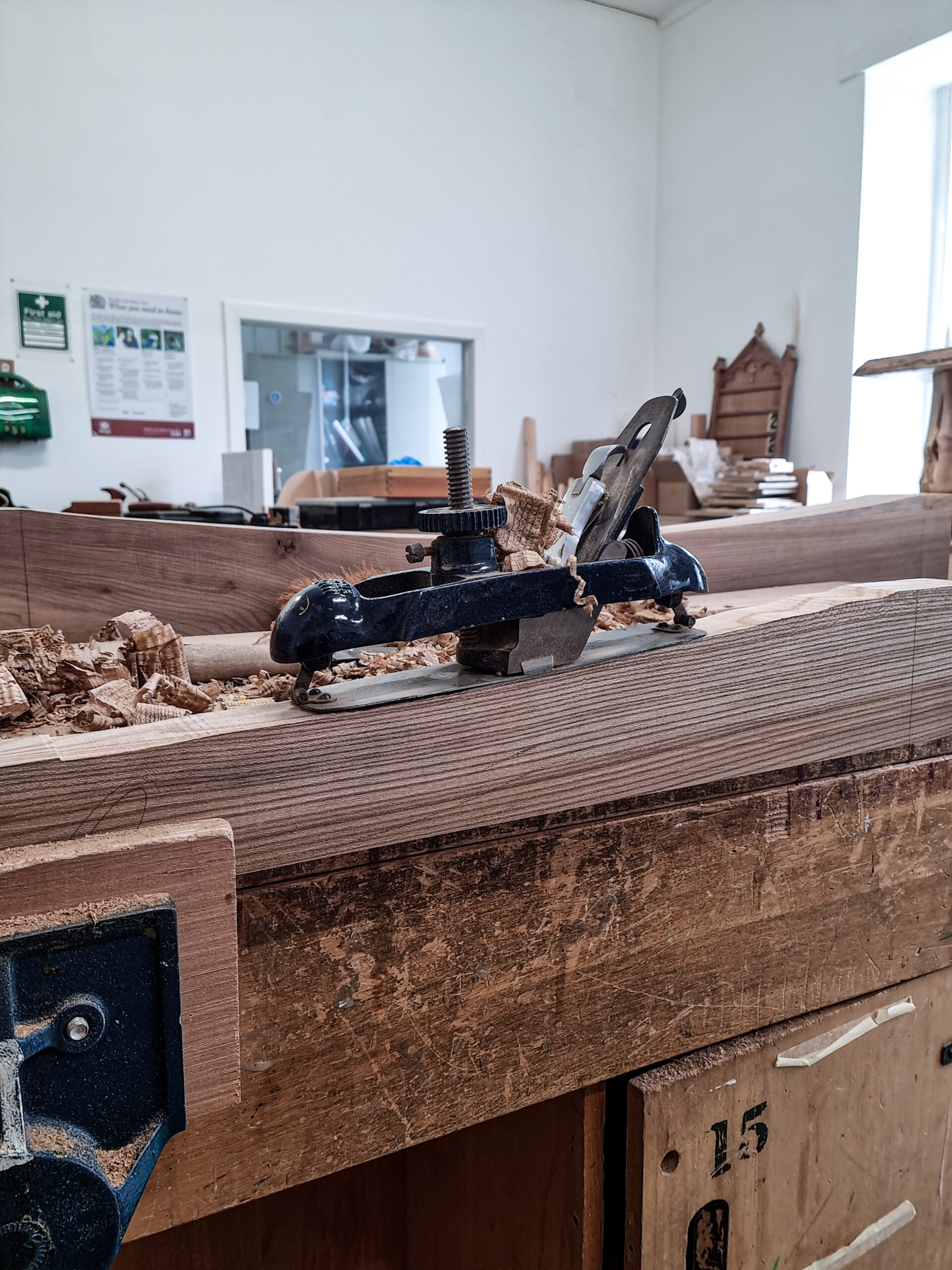
Although our project had been underway in some shape or form for over a year it was this day, the Friday of the third week that I was working in the workshop, that I truly felt the project come alive for me. That first year had seen the formation of our team and its partners, our discussions about what the project could and should be, the planning of how to achieve our objectives, and the designing of the installation, and these were all wonderful and rich and rewarding. But working together with new friends, all using our hands and finding the best ways to collaborate with different pieces of wood together, this was exactly the kind of communal spirit that I had always hoped that this project might be able to materialise and represent, and feeling it here was pure joy for me.
We brought the base pieces to almost final dimensions, with just a few swipes of a handplane or passes with sandpaper needed to remove the final fractions of a millimetre, and in so doing hit another milestone in the project.
We had several distinct and separate pieces of wood, and now we were ready to bring them together and join them into a single structure. This meant that one of the things I had been looking forward to most was about to begin. The design and cutting of the joinery.
